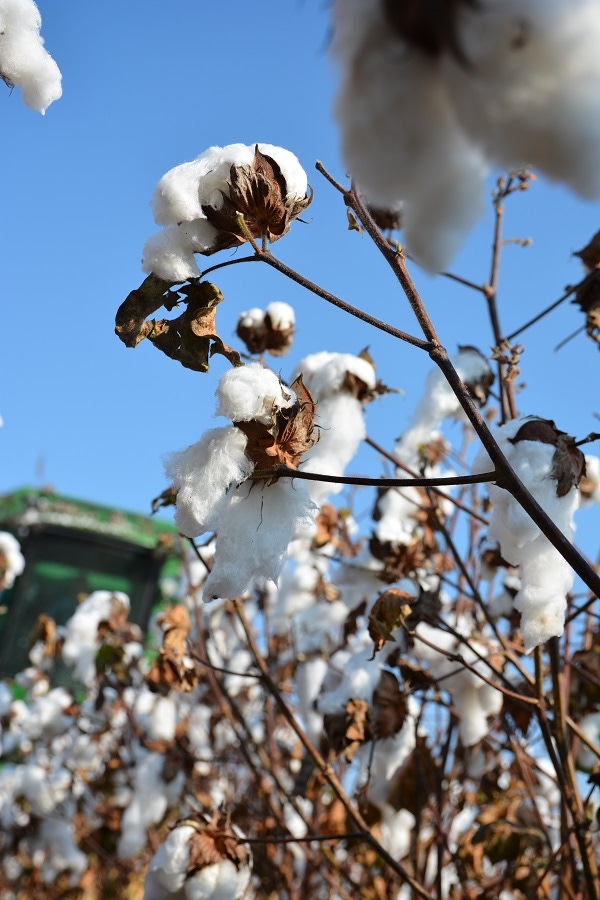
Acronyms in the Agricultural Act of 2014 relating to cotton look more like a bad rack of tiles on a Scrabble board than programs that offer a safety net for producers caught by income losses.
STAX SCO--what can you make out of that?
Ideally, a bit more protection than risk management options provide, if added to sound crop insurance purchases. Both are acronyms for new crop insurance enhancements—Stacked Income Protection and Supplemental coverage Option— both designed to cover a good chunk of the deductible for typical crop insurance products. Also, each provides some premium cost subsidy through the Risk Management Agency (RMA).
Both programs also seek to provide some level of risk management in place of programs no longer available for cotton in a farm bill that eliminated cotton as a covered commodity, a result of efforts to resolve the World Trade Organization ruling that favored Brazil’s claim that the U.S. cotton program was market distorting.
For the latest on southwest agriculture, please check out Southwest Farm Press Daily and receive the latest news right to your inbox.
SCO and STAX are area risk protection programs. Payments are triggered by county losses, not individual farm losses. A farmer might suffer significant crop loss and still not receive payment from either of these products if a county level loss is not triggered.
Available for purchase
Both products are available for purchase in addition to existing crop insurance coverage.
Darren Hudson, director, Cotton Economics Research Institute at Texas Tech University in Lubbock, says cotton farmers’ first chore in deciding which of these programs works best for the 2015 crop year is to evaluate basic insurance options with agents to determine coverage needs.
“In some cases, producers may get crop insurance cheaper on a per acre basis than they did last year,” he said during the cotton session of the recent Red River Crops Conference in Childress, Texas, the second year for the event sponsored by the Texas and Oklahoma Extension Services.
Significant differences exist between SCO and STAX. Premium subsidy for SCO is 65 percent. Subsidy for STAX is 80 percent. Which is better for a particular farm depends on the farm, Hudson said, but a recent farm survey indicates for most Texas cotton operations, STAX will fit best.
In that survey he said STAX combined with an underlying revenue protection policy was best in all Texas farms. Also, SCO sometimes would pay less than the stand-alone underlying policy due to premium cost. The premium price for SCO endorsement is “relatively higher than for STAX,” he said.
“Farmers should understand the RMA expected county yield to better project benefits from STAX and SCO.”
He said the yield exclusion provision that allows an additional adjustment mechanism for APH yields could also affect insurance choice and program benefits.
SCO advantage
In the most recent Plains Cotton Growers, Inc., weekly newsletter, Shawn Wade, director of policy analysis and research, reported that SCO may offer one additional advantage in 2015—the ability to incorporate cottonseed coverage via the Cottonseed (Pilot) Endorsement.
“Although very little information is available detailing the specifics of how the SCO endorsement will incorporate cottonseed coverage, a Nov. 19, 2014, press release issued by the USDA Risk Management Agency included cottonseed in the list of crops that would have SCO coverage available in 2015,” Wade said. “County level actuarial information available on the USDA RMA website also includes references to the cottonseed endorsement alongside the actuarial data for the SCO endorsement.”
Wade said specifics on how the cottonseed coverage will be included in SCO endorsement will eventually be available from local crop insurance providers.
He says growers who have added the Cottonseed (Pilot) Endorsement to a Yield or Revenue-based multi-peril insurance policy likely will have yield-based cottonseed coverage extended to the SCO endorsement if it is purchased on a cotton lint policy.
“Cottonseed coverage will not be available to growers on acres covered by the Stacked Income Protection Plan (STAX) in 2015,” Wade said.
About the Author(s)
You May Also Like






